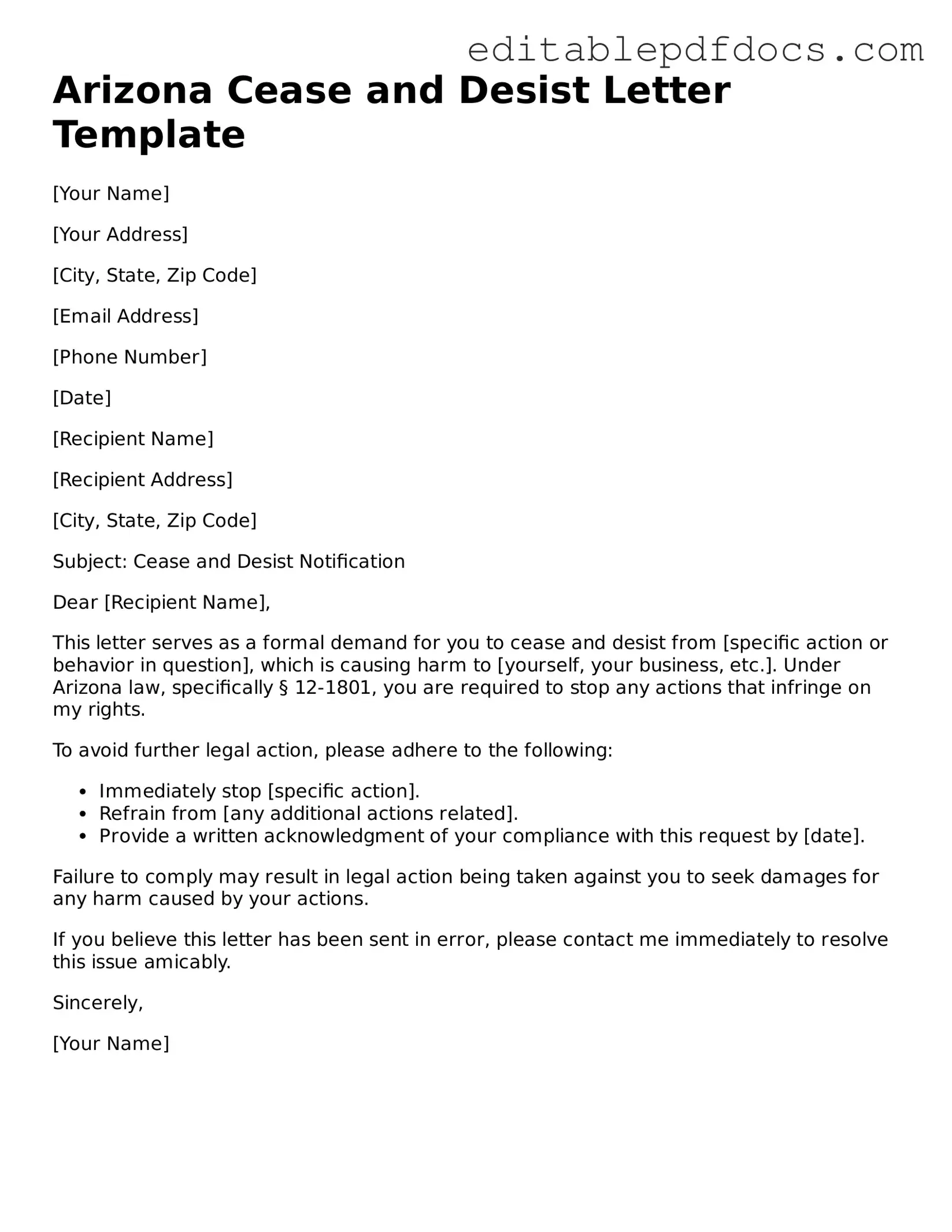Cease and Desist Letter Document for Arizona
A Cease and Desist Letter is a formal request demanding an individual or organization to stop engaging in a specific action that is deemed unlawful or harmful. In Arizona, this letter serves as a crucial tool for individuals seeking to protect their rights and interests. If you believe you need to address a troubling situation, consider filling out the form by clicking the button below.
Open Editor Now
